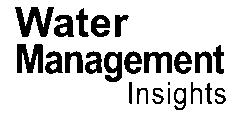In the shadowy depths of groundwater systems worldwide, a silent threat is brewing. Emerging contaminants, such as antibiotics, endocrine disruptors, and perfluorinated substances, are infiltrating our water supplies at alarming rates. These contaminants, often found in trace amounts, pose significant risks to both human health and the environment. The challenge? Detecting them swiftly and accurately.
Kaining Yu, a researcher at the Hebei Center for Ecological and Environmental Geology Research, Hebei GEO University, Shijiazhuang, China, has been at the forefront of this battle. In a recent study published in ‘Yankuang ceshi’ (Mining and Testing), Yu and his team reviewed the latest rapid detection methods for these elusive pollutants.
The stakes are high, particularly for the energy sector. Groundwater contamination can disrupt operations, lead to costly remediation efforts, and even jeopardize the safety of workers. “The concentrations and detection rates are high in some areas, posing a serious threat to groundwater and surface water resources,” Yu warns. This is not just an environmental issue; it’s a commercial one.
Traditional laboratory methods, while accurate, are time-consuming and expensive. They involve complex sample pre-treatment and high-resolution instruments that are not always accessible. “The analysis of emerging contaminants takes a long time from sampling to getting analysis results,” Yu explains. This delay can be detrimental in fast-paced industrial settings where immediate action is crucial.
Enter sensor detection technology. This field-based method promises rapid results, often within minutes. Electrochemical, optical, and biological sensors are leading the charge, offering a more agile approach to monitoring water quality. However, most current sensors are designed to detect single contaminants, limiting their practicality in real-world scenarios where multiple pollutants are often present.
Immunoassay detection technology offers another promising avenue. Enzyme-linked immunosorbent assays (ELISAs) and immunochromatography can quickly screen for contaminants on-site, providing preliminary results without the need for expensive instruments. “Immunoassay technology has high specificity, strong sensitivity, simplicity, convenience, and no need for expensive instruments,” Yu notes. But it’s not without its flaws; false negatives and positives can occur, complicating the detection process.
The future of rapid detection lies in innovation. Researchers are exploring new materials and combining multiple detection techniques to create faster, more cost-effective methods. The goal? To achieve simultaneous detection of multiple pollutants with high sensitivity and accuracy.
Yu’s research underscores the urgent need for advanced detection methods in the water, sanitation, and drainage industry. As contaminants continue to infiltrate our water supplies, the ability to detect and respond to these threats swiftly and accurately will be paramount. The energy sector, with its reliance on clean water for operations, stands to benefit significantly from these advancements. The race is on to develop technologies that can keep pace with the evolving landscape of water contamination, ensuring the safety and sustainability of our most precious resource.
